Starting a terminal application on your computer¶
We use the (ahem) term terminal to mean an application that allows you to run applications by typing commands.
Here’s a screen-shot of a Mac terminal window:
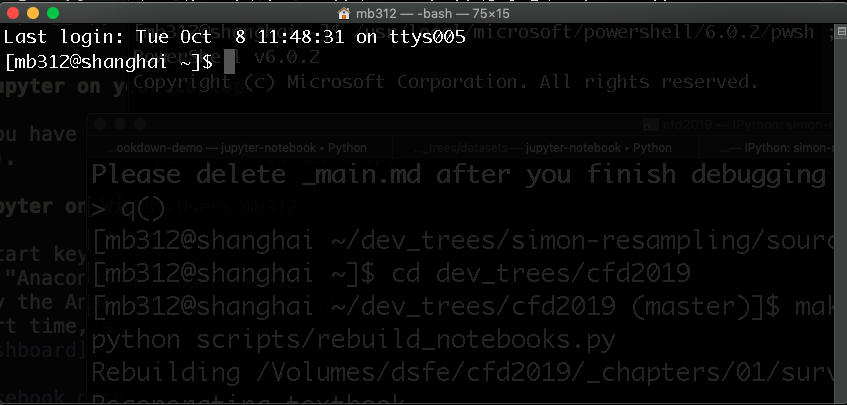
There is a similar terminal window for (ahem) Windows.
The terminal has a prompt - in the Mac terminal above it is [mb312@shanghai ~]$, but yours will be different. The cursor sits at the end of the prompt.
If you type in this window, the characters will appear at the prompt. When
you type some text, and press Enter, the terminal will interpret what you
typed as commands to be sent to the computer. Usually the commands will be
names of programs (applications) to run, along with any parameters that the
program needs.
Opening the terminal - Windows¶
Go to the start menu. Select the menu option “Anaconda (64-bit)”.

Then select the option “Anaconda command prompt”.
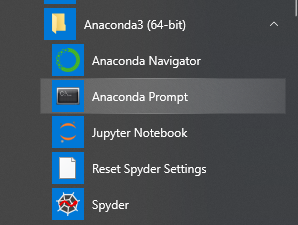
You should see a window like this:
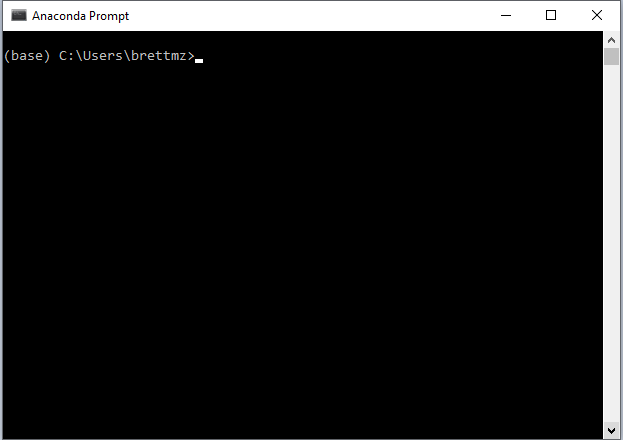
To test, type the command dir and press Enter. You should see a listing of files in the directory that the terminal started in, rather like this:
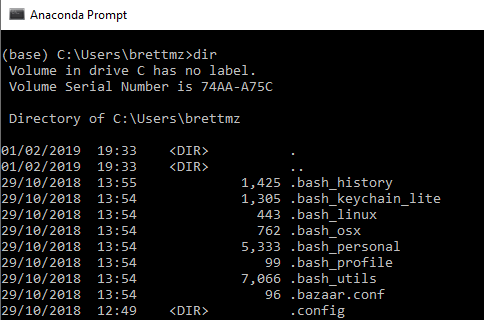
where the files on your computer will be the different from the first few files that you see in this listing.
Opening the terminal - Mac¶
Mac has a terminal application called Terminal.app.
You’ll find it in the Utilities sub-folder of your Applications folder, but the easiest way to start it is via Spotlight.
Start spotlight by either:
Clicking on the magnifying glass icon at the right of your menu bar at the top of your screen

or (the better option):
Press the command key (the key with the ⌘ symbol) and then (at the same time) the spacebar.
In either case, a mini-window like this will come up:

Type terminal in this window. The first option that comes up is almost invariably the Terminal application:
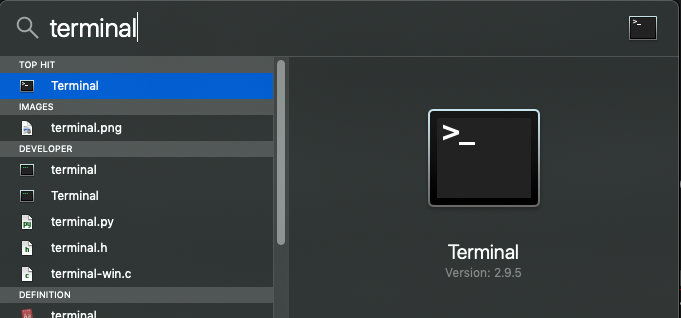
Select this by pressing Enter, and you should see the Terminal application window, as above.
If you see a window where there doesn’t seem to be a prompt, that has several
lines starting with something like [I 11:39:53.621 NotebookApp], then you have got to the Terminal window that Jupyter is using; you need a new window. Choose “New Window” from the “Shell” menu in the menu bar to start a new window. That window should be fresh, and look like the window at the top of the page.
Opening the terminal - Linux¶
If you are on the class laptops, go to the desktop, and double-click on the “LXTerminal” icon. This will open the terminal.
If you are not on the class laptops, and you don’t know how to open a terminal, do a web search for “open terminal ubuntu” where “ubuntu” is your Linux distribution. You should get some good hits.
